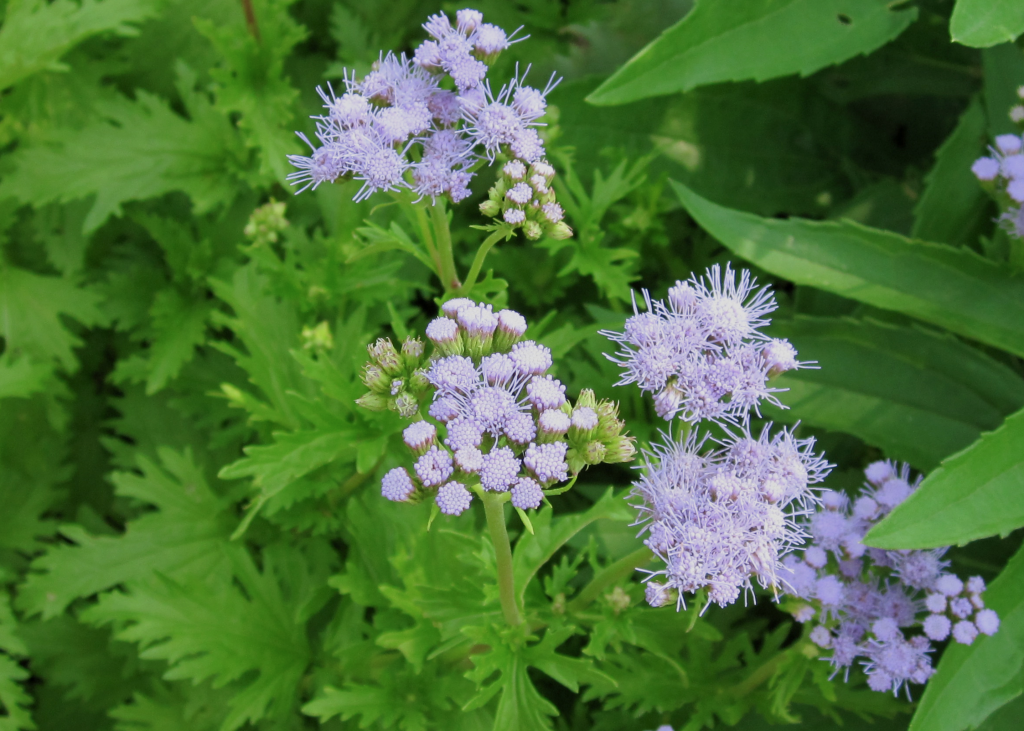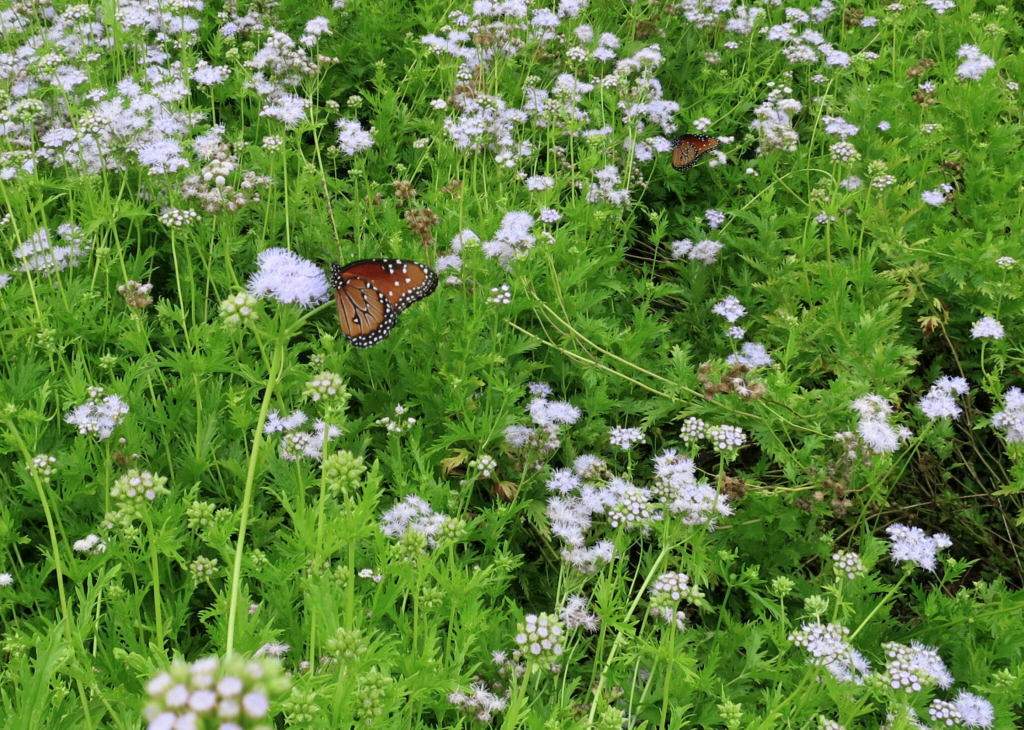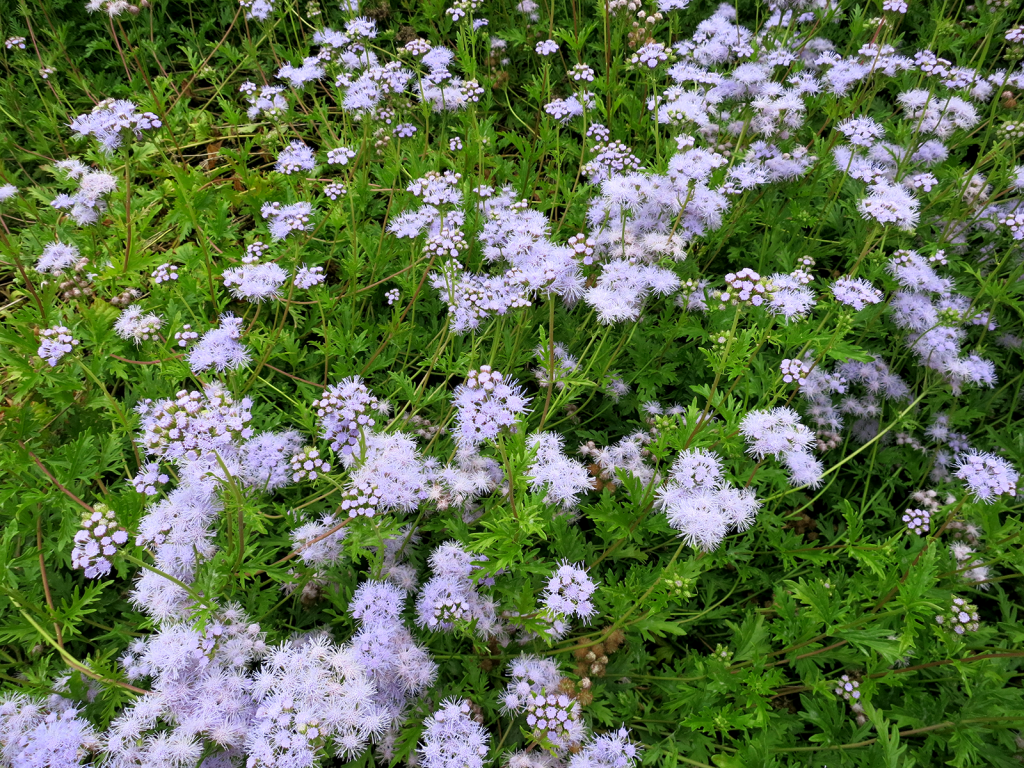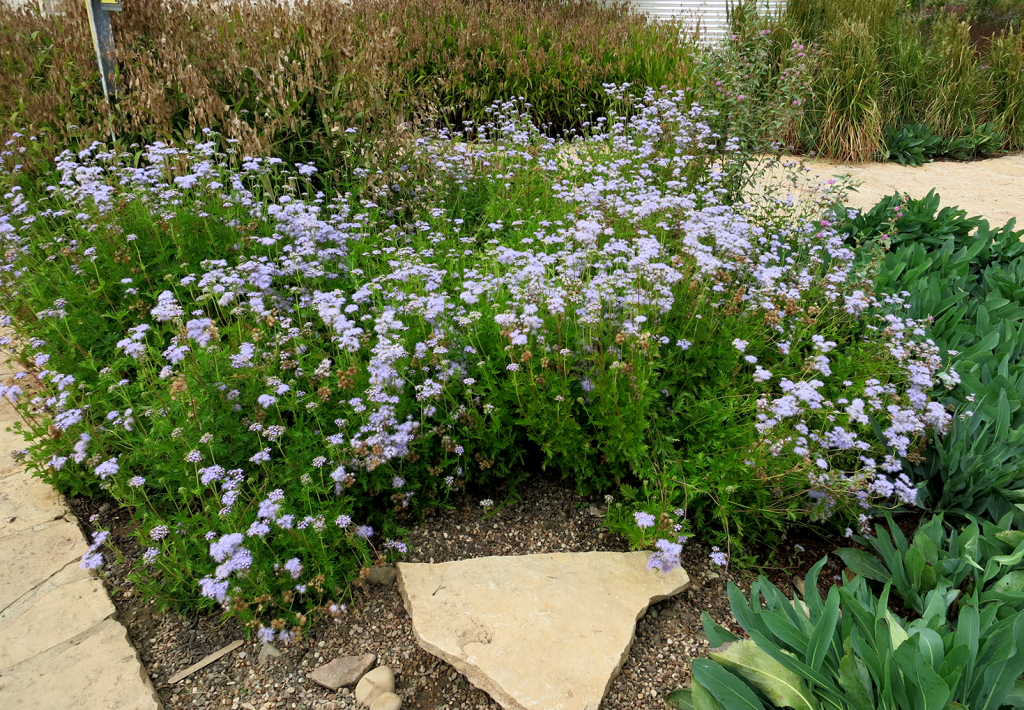Gregg’s blue mist, Gregg’s mistflower, palmleaf thoroughwort, Texas ageratum
Conoclinium dissectum (Eupatorium greggii)

This Texas native wildflower is also known as Gregg’s blue mist, Gregg’s mistflower, palmleaf thoroughwort, Texas ageratum, or by its former botanic name of Eupatorium greggii. Gregg’s blue mist is a king of the butterfly plants for the late summer and fall landscape attracting fluttering clouds of winged companions. Numerous butterfly species, including queens and migrating monarch butterflies will flock to the flowers. Clusters of small composite sky blue, baby blue, to lavender-blue flowers bloom continuously for months. Yellow flowering perennials such as Mexican mint marigold (Tagetes lucida) make excellent companion plants for contrasting colors. Growth habits are initially upright growing taller than wide, but then spread out and can slowly sucker or seed to form colonies which are even more attractive than a single plant. If you have grown old-fashioned Mexican ageratums (Ageratum houstonianum), think of them as if they were on steroids tolerating tougher sites, growing taller, and coming back year after year to grace our demanding regional gardens and you will have a pretty good idea of what Gregg’s blue mist will become.
Exposure: Full sun to mostly sunny location. Flowering is reduced with increased shade.
Size: 12 to 18 inches tall and 12 to 24 inches wide.
Plant Type: Dieback herbaceous perennial.
Hardiness Zones: 7-9.
Water Use: Low to medium. Will persist with minimal irrigation, better growth and flowering with modest irrigation during summer heat.
Bloom Time: Late spring to late fall, peak in late summer and fall.
Planting Time: Planting from containers can occur any time in most of Texas, save the dead of winter in northern portions.
Soil Type: Adapted to a wide range of soil pH and textures as long as they are reasonably well-drained. Avoid wet soils, particularly in winter.
Suggested Uses: Perennial and mixed borders, pockets of color, rock gardens, mass plantings for slopes, butterfly and pollinator gardens, small scale groundcover, naturalizing in wildflower areas or in pocket prairies, mixed fall patio containers.
Special Notes: Cultivars are available with more compact habits or differing somewhat from the species type in flowering. Initial pinching of the plants will encourage greater canopy density but will not be necessary over time. This Trans-Pecos native is quite drought tolerant but does require well-drained soils in more mesic regions. Plants can be established in spring in regions where cold does not permit overwintering to provide late summer and fall seasonal color. Conoclinium coelestinum is a closely related herbaceous perennial with similar flowers but unlobed leaves that is sometimes also known as blue mistflower, however it lacks the drought tolerance and Texas toughness of Conoclinium greggii.
Additional information: Gregg’s blue mistflower newest Texas Superstar – AgriLife Today



